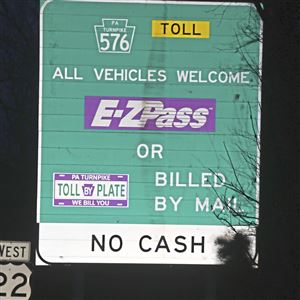After years of concern about the number of traffic accidents that occur in road construction zones, Pennsylvania is doing something about it.
Beginning Jan. 4, the Pennsylvania Department of Transportation and Pennsylvania Turnpike will begin a 60-day pilot program to formally test what’s called the Automated Work Zone Speed Enforcement program. The program is designed to cause drivers to slow down in construction areas by setting up speed monitoring equipment in work areas.
After the pilot program is finished, the two state agencies expect to deploy private contractors in white Jeep Cherokee SUVs at various sites throughout the state to monitor speed beginning March 4. If the monitors detect someone going more than 11 miles an hour over the speed limit, the motorist will receive a notice by mail with a warning for the first violation, followed by a $75 fine for a second offense and $150 for each future ticket.
The incidents will be treated as civil violations and no points will be added to a driver’s license.
“From our standpoint, we aren’t trying to make this an ‘I got you’ situation,” said Dan Farley, chief of transportation systems management and operations for PennDOT. “We’re trying to address the egregious speeding in our work zones.”
The new program was authorized by the Legislature in 2018, but its history dates back much further. A report in 2012 by the state Transportation Advisory Committee recommended similar steps to control speeding in work zones.
The concern is obvious in accident statistics: In 2018, there were 2,804 accidents in work zones across Pennsylvania that resulted in 23 fatalities. Forty-three percent of those accidents resulted in injuries. Since 1970, 89 PennDOT workers have died in traffic accidents in work zones and 45 turnpike employees have died since 1945.
“The over-arching theme of this program is safety, both for workers and the traveling public,” said Mahmood Shehata, a consultant overseeing the program for the state. “Too many people are dying in our work zones.”
Here’s how the program will work:
Private contractor Redflex Traffic Systems, an Australian company with U.S. headquarters in Arizona, will deploy the Jeep Cherokees across the state based on work zones that are considered the most dangerous. Their deployment will be posted on a special website, and each site will have two 4-foot-square signs to warn drivers they are approaching and entering a zone where speed is being monitored and a photo is being taken of license plates.
The Jeep Cherokees, which look similar to self-driving vehicles with equipment mounted on the roof, monitor speed in two ways. One is similar to the equipment used by state police and the other is Doppler radar, and the two methods must agree before the operator recommends a driver should receive a violation.
If the operator determines the equipment has been calibrated properly and the license photo is clear, the possible violation is sent to state police. That agency reviews the information again and if it agrees a violation should be issued, it forwards the information to PennDOT to issue the ticket.
The law requires a ticket to be issued within 30 days of the incident. The driver then has 30 days to challenge the ticket or pay it.
The only defenses for the ticket are if the person receiving the ticket didn’t own the vehicles when the violation occurred; the vehicle had been reported stolen; or the monitoring equipment wasn’t calibrated properly.
PennDOT will have 10 monitoring vehicles and the turnpike will have seven. Under the law, the vehicles only can be stationed in areas with active road crews, not any area with lane restrictions.
“We actually are letting people know where we’ll be,” said Mr. Shehata. “We definitely want people to be aware of this and know where we are so they slow down.”
Tom Macchione, manager of traffic engineering for the turnpike, said that during pretesting that began in November, the agency found about 10% of drivers would have received violations if the program had been active. That’s consistent with what happened when a similar program started in Maryland, he said, but the numbers dropped significantly within a few months.
Mr. Macchione said turnpike officials will consider a number of factors to determine where to deploy the vehicles. They include reports from works crews; whether a work area is protected by Jersey barriers or some other method; and how many accidents have been reported in the area.
“The intent is to put these in areas where the data shows speed has been a problem,” Mr. Farley said. “In the areas where we’ve been doing the testing, we are starting to get the motoring public to pay attention.”
Ed Blazina: eblazina@post-gazette.com, 412-263-1470 or on Twitter @EdBlazina.
First Published: December 29, 2019, 4:52 a.m.
















